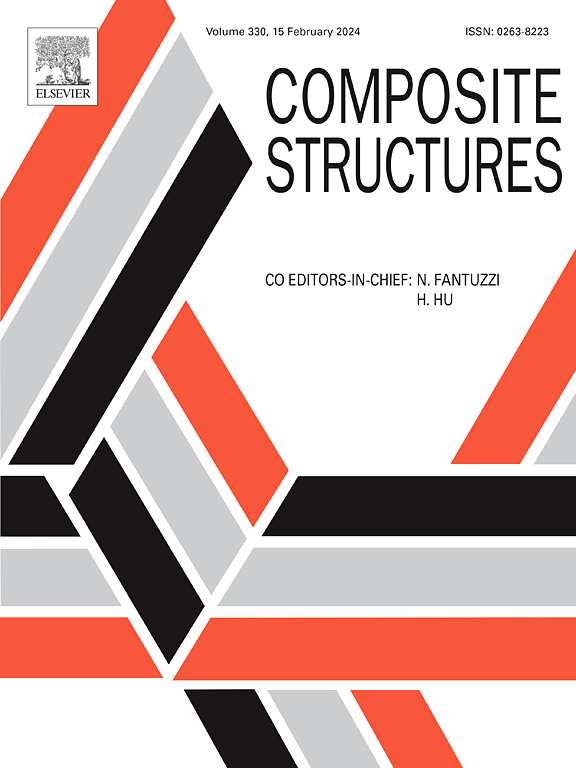非均匀曲率双稳态复合带弹簧的展开
IF 6.3
2区 材料科学
Q1 MATERIALS SCIENCE, COMPOSITES
引用次数: 0
摘要
研究了具有抛物线、椭圆、悬链线和圆形截面的双稳态复合带弹簧的开卷展开。与圆柱单稳态壳不同,双稳态带弹簧在超出其应变能峰值时表现出平滑的展开运动,将稳定盘绕和扩展平衡状态分开。本文的主要贡献是描述了当双稳态带式弹簧的横截面偏离普遍存在的圆形轮廓时,其展开行为的优势。通过线性执行器启动悬臂带弹簧的展开,通过运动捕捉系统进行测量,并与有限元分析相关联。椭圆带状弹簧在表现出不稳定驱动的自展开之前,在离根最远的地方展开,但由于释放的应变能最大,因此具有最短的自展开时间。如果要将吊杆的长度按比例放大,因为需要转换更多的质量,那么最具能量的部署是有利的。椭圆截面也被发现具有最佳的刚度性能,同时最有效的装载体积。相反,圆形胶带弹簧由于释放最少的应变能而具有最慢的自我展开。本文章由计算机程序翻译,如有差异,请以英文原文为准。
Deployment of bistable composite tape springs with non-uniform curvatures
The uncoiling deployment of bistable composite tape springs with parabolic, elliptical, catenary, and circular cross-sections are investigated. Unlike cylindrical monostable shells, bistable tape springs exhibit a smooth unrolling motion when actuated beyond their strain energy peak dividing the stable coiled and extended equilibrium states. The main contribution by this paper is characterizing the advantages in the deployment behavior of bistable tape springs if their cross-section deviates from the ubiquitous circular profile. The uncoiling deployment of cantilevered tape springs with optimized profiles is initiated with a linear actuator, measured with a motion capture system, and correlated with finite element analysis. The elliptical tape spring is found to uncoil the furthest from the root before exhibiting instability driven self-deployment, but has the shortest self-deployment duration due to releasing the largest amount of strain energy. Having the most energetic deployment is advantageous if boom lengths are to be scaled larger because more mass needs to be translated. The elliptical cross-section is also found to have the best stiffness performance while being most stowed volume efficient. Conversely, the circular tape spring has the slowest self-deployment due to releasing the least amount of strain energy.
求助全文
通过发布文献求助,成功后即可免费获取论文全文。
去求助
来源期刊

Composite Structures
工程技术-材料科学:复合
CiteScore
12.00
自引率
12.70%
发文量
1246
审稿时长
78 days
期刊介绍:
The past few decades have seen outstanding advances in the use of composite materials in structural applications. There can be little doubt that, within engineering circles, composites have revolutionised traditional design concepts and made possible an unparalleled range of new and exciting possibilities as viable materials for construction. Composite Structures, an International Journal, disseminates knowledge between users, manufacturers, designers and researchers involved in structures or structural components manufactured using composite materials.
The journal publishes papers which contribute to knowledge in the use of composite materials in engineering structures. Papers deal with design, research and development studies, experimental investigations, theoretical analysis and fabrication techniques relevant to the application of composites in load-bearing components for assemblies, ranging from individual components such as plates and shells to complete composite structures.
 求助内容:
求助内容: 应助结果提醒方式:
应助结果提醒方式:


